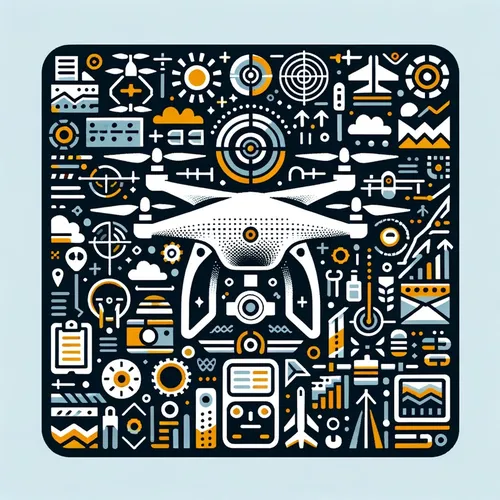Drone Pilots Dish: Soaring Profits, Strict Regs, and AI's Surprise Entrance
- Author
- Quiet. Please
- Published
- Sat 21 Jun 2025
- Episode Link
- https://www.spreaker.com/episode/drone-pilots-dish-soaring-profits-strict-regs-and-ai-s-surprise-entrance--66674051
This is you Professional Drone Pilot: Flight Tips & Industry Updates podcast.
Professional drone pilots today are navigating an industry characterized by rapid technological advancement, evolving regulations, and expanding opportunities. Mastery of advanced flight techniques remains essential—pilots are expected not only to execute routine aerial photography or inspections but to employ sophisticated maneuvers such as autonomous waypoint missions, precise low-altitude mapping, and complex orbital shots around infrastructure. Optimizing equipment is a must; predictive maintenance powered by artificial intelligence and real-time sensor data is reducing downtime and extending drone lifespan, with the drone maintenance service sector projected to grow at over five percent annually through 2033.
Maintaining your FAA certification is non-negotiable. Commercial operations require a Remote Pilot Certificate, obtainable by passing the Part 107 knowledge exam and registering your drone. Online recurrent training is now required every two years, ensuring that pilots stay updated on rules and best practices. In recent news, regulatory agencies have begun streamlining approvals for beyond visual line of sight flights, opening new revenue streams in logistics and large-scale inspections. Modular drone systems, allowing a single airframe to carry multiple payloads, are trending, offering cost savings and easier compliance management for commercial operators.
The business landscape is expanding as industries from agriculture to real estate and utilities integrate drones for data collection and operational efficiencies. The drone-as-a-service model is gaining traction, where end-clients expect not only data capture but also maintenance and regulatory compliance bundled into contracts. Pricing strategies are evolving: value-based pricing, where fees are linked to client cost savings or project impact, increasingly replaces simple hourly rates. Building trust and clear communication with clients remains crucial for repeat business.
Weather continues to be an operational challenge. Modern pilots leverage advanced forecasting and onboard telemetry to plan missions, monitor wind patterns, and adjust for microclimates that can affect battery life and flight safety. Insurance remains a hot topic—recent industry updates now require more comprehensive coverage, with many clients demanding proof of both liability and hull insurance before contracting work.
Looking ahead, expect increased automation, more stringent safety protocols, and deeper integration with AI-driven analytics. Action items for today’s pilot are clear: keep certifications current, invest in robust maintenance and modular gear, and build flexible service offerings to stay competitive. As regulatory frameworks mature and market demand grows, professional drone operations are set to become even more central in sectors where precision, speed, and data quality are paramount.
For more http://www.quietplease.ai
Get the best deals https://amzn.to/3ODvOta
